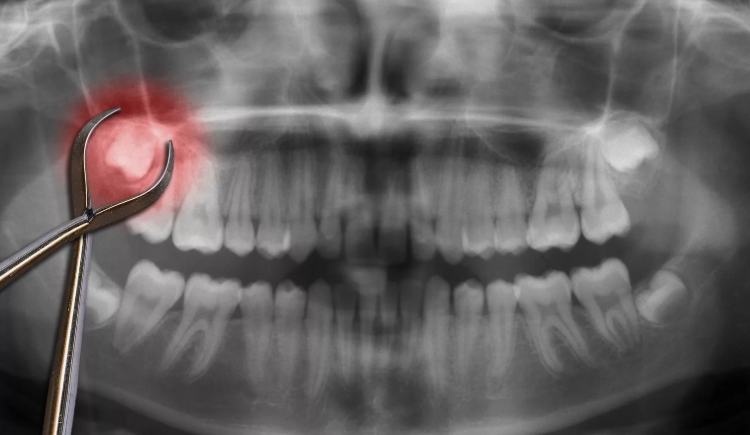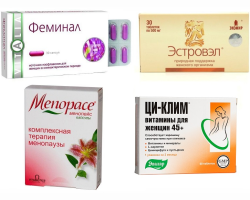Read in this article information about how many days the temperature lasts with a specific disease, and what to do if it does not fall for a long time.
Content
- Classification of viral infections at which high temperature can last
- Why can high temperature with influenza, acute respiratory viral infections, pneumonia in adults and children?
- How many days should a high temperature of an adult and a child with a cold - 38 ° C - 39 ° C: flu, acute respiratory infections, acute respiratory viral infections, viral infection
- SARS: How many days does a temperature of 37 ° C last?
- When teeth teething: how many days does a child have a temperature?
- How many days does the temperature last with a sore throat in an adult and a child?
- How many days and what temperature holds at the Coronavirus virus in an adult and a child?
- How many days does the temperature last with chickenpox?
- How many days can a high temperature have an adult and a child with bronchitis?
- How many days does a high temperature last with pneumonia?
- How many days does the temperature last after the DTP vaccination?
- How many days does the temperature last when taking antibiotics?
- How many days after surgery can temperature last?
- How many days does the temperature last after removing the wisdom tooth?
- How many days the temperature lasts - Komarovsky: video
- Video: The temperature of the child is kept. When is the time to the doctor? Dr. Komarovsky
- Video: If the temperature is more than three days - what to do?
Increased body temperature is the protective mechanism of the body in children and adults. It slows down the growth and propagation of microorganisms in the human body. The reasons can be different: viral or bacterial infection, impaired immune system, tumor, condition after surgical surgery, the use of drugs and impaired thermoregulation.
- Hyperthermia makes it clear that the body has violations in the work of systems and organs.
- In this case, consult a doctor.
- But the temperature itself is not treated, if necessary, it can be reduced.
- Antibiotics do not help in treatment, only the doctor decides whether it is worth taking them with a particular pathology or not.
- The temperature is a symptom of many diseases and in most cases is different.
In this article, we will consider several issues related to the duration of such a state and how to respond to it. What is the norm and when is it worth paying attention to deviations in order to avoid complications? Look for the answer to this question below. Read further.
Classification of viral infections at which high temperature can last

There are many viral infections. Here is their classification, depending on the affected body systems-digestive, respiratory, cardiovascular, etc.:
Respiratory infections:
- These are frequent diseases.
- They cause severe symptoms in babies, elderly and people with chronic diseases of the heart or lungs.
- Such infections include: flu type A and B, bird flu type A, paragraph 1-4, adenoviruses.
- You can get infected with airborne droplets.
Gastrointestinal infections:
- Gastroenteritis is transmitted from person to person.
- Causes diarrhea, vomiting and fever.
Exantematose infections:
- This group of infections includes measles, scarlet fever, chickenpox and other infections with a rash on the body.
- The characteristic symptom is exanthema. The body of an infected person is covered with a rash that plays an important role in diagnosis.
- With a sudden exanthemum, a rapid increase in temperature is characteristic, subfebrile fever lasts 3-5 days, but can reach 7 days.
- With scarlet fever, the temperature rises sharply to 38-40 ° C, a decrease in children is observed after 3-5 days. In adults, it rises to 38 ° C-38.5 ° C and lasts from 1-3 days.
- With measles, the temperature also rises to 38 ° C-40 ° C, but after 3-5 days the fever decreases.
Liver infections:
- Hepatitis call 5 viruses - viruses hepatitis a, b, c, d and e.
- The infection is transmitted from person to person through infected blood or fecal-oral route.
Neurological infections:
- The main carriers of the arboviruses (viruses that amaze the nervous system) are mosquitoes, ticks and other arthropods.
- Through the lesion, they are divided into several groups: meningitis, encephalitis, myelitis.
Blood infection or hemorrhagic fever:
- The infection of mosquitoes, ticks, rodents and other animals is caused.
- It is manifested by symptoms such as bleeding and hemorrhage.
With each of these diseases, an increase in temperature is observed, in response to the fight against infection. It is worth noting that each virus can hit a special age group. For example, children are subject to rotaviruses, and adolescents over 12 years old and adults are noroviruses.
Why can high temperature with influenza, acute respiratory viral infections, pneumonia in adults and children?

Ideal and normal human body temperature 36.6 ° C.. But with many respiratory diseases such as acute respiratory viral infections, influenza and pneumonia, it can reach maximum marks - 40 ° C..
Any such disease can be caused by the ingress of the virus into the body with airborne droplets. Frequent signs are:
- Cough
- Weakness
- Sore throat
- Fast fatiguability
- Headache
Why can high temperature with influenza, acute respiratory viral infections, pneumonia in adults and children:
- The body reacts to microbes and bacteria, activating the immune system.
- Accordingly, the signal is transmitted about this to the thermoregulation center - the temperature begins to increase.
- Depending on the type of microorganisms, the temperature holds a specific time characteristic of each disease.
- In some cases, the temperature can be much longer than normal.
Let's figure out how to distinguish these diseases:
Influenza and SARS:
- Most often flu and SARS confuse among themselves, since they are somewhat similar in symptoms. And this is to some extent justified, since the flu is a type of acute respiratory viral infection.
- SARS, in turn, can cause more than two hundred species of viruses.
- Influenza and SARS It manifests itself immediately, a few hours after infection. The temperature rises sharply to 38 ° C - 40 ° C. Moreover, as, for example, with ordinary acute respiratory infections, this happens gradually, within the framework of several days.
Pneumonia:
- This is inflammation of the lungs.
- Symptoms develop more slowly, and one of the signs of the disease is the pain in the chest, which is not observed with influenza and SARS.
- The high temperature, which lasts a long time, means controlling the fight against the residual amount of the virus and the support of the thermoregulation center.
- But sometimes it signals the development of complications in the body. Then it is worth expecting a second wave due to additional infection.
Based on the etiology of the disease and human immunity, it depends on how much time the body will be in the pathological state, and how much the high temperature will last.
How many days should a high temperature of an adult and a child with a cold - 38 ° C - 39 ° C: flu, acute respiratory infections, acute respiratory viral infections, viral infection

Most often, the body needs from 3 to 5 days to fight infection. Particular treatment is not prescribed. It is necessary to observe bed rest and drink a large amount of liquid.
It's important to know: But if the indicators of the thermometer above 38.5 ° C, you need to take antipyretic, as you can cause huge harm to the exhausted body.
If the viral infection of the body is caused by noroviruses, then the temperature has a wave-like character: it is increased for 2-3 days, then normalizes, rises again and lasts 2-3 days and normalizes completely.
With influenza in one hour, fever can lead to marks at 40 ° C. This can happen with influenza, SARS. Based on the foregoing, it is worth noting that a high temperature of 38 ° C - 39 ° C in adults and children should stay for several days. It is worth knowing:
- If she does not fall after 4 days Diseases, then tests, x -rays and other diagnostics are prescribed.
- Also at this time, the doctor can prescribe antibiotics, especially when it comes to a child.
- It is difficult and dangerous for the children's body to endure high temperature for so long.
With acute respiratory infections and ordinary colds, the temperature does not increase above 38 ° C. It lasts a couple of days, then gradually normalizes.
SARS: How many days does a temperature of 37 ° C last?
A cold or infectious disease is characterized by leakage at low temperature. For SARS and ARI, such a thing as a subfebrile temperature is characteristic - 37 ° C --37.5 ° C. This condition is not observed for long. The temperature lasts a couple of days until the virus is completely destroyed, and then normalizes.
When teeth teething: how many days does a child have a temperature?

One of the terrible trials for many parents is the appearance of the first teeth in a child. Children become moody, sleep is disturbed, intestinal disorder and even temperature appear. Therefore, parents are concerned about the question of teeth teething: how many days does the child have a temperature? Here's the answer:
- It all depends on the condition of the baby’s gums, and which teeth are cut.
- Temperature 37.5 ° C. And the heat is observed when the fangs are torn.
- The rest of the teeth can be cut unnoticed by mom with dad. Although the body of many babies react precisely by disorder of the nervous system and fever.
But if the temperature is higher 38 ° C. Holds more than 3 days, then you should contact the pediatrician. Perhaps an infection is brought, as children often pull different objects and toys in the mouth.
How many days does the temperature last with a sore throat in an adult and a child?

Angina in an adult and a child almost always proceeds with a high temperature. This is an acute state when tonsils are inflamed. A purulent plaque appears on them.
Important: If your temperature has risen and your throat hurt a lot, urgently contact the doctor - therapist (adults), a pediatrician (children) or otolaryngologist.
With sore throat, correct and timely treatment is important. High temperature can stay before taking antibiotics, and they are prescribed from the first day of the disease.
If the pathology is launched and not treated, then it flows into chronic form - tonsillitis. This disease is manifested by low temperature, lethargy, the presence of periodic headaches. With exacerbation of chronic tonsillitis, the temperature may reach up to 38 ° C, or even higher. Treatment helps the body cope with the disease and relieve exacerbation. Then it is necessary to treat chronic tonsillitis by washing the gaps in the tonsils, or by using pills for the course - anginhel 2 times a year. But only a doctor should prescribe treatment for tonsillitis and chronic tonsillitis.
How many days and what temperature holds at the Coronavirus virus in an adult and a child?

Recently the whole world was faced with a pandemic caused coronovirus Covid-19. Earlier, humanity suffered from other types of infections: SARS (severe acute respiratory syndrome) in 2002 and Mers (respiratory syndrome of the Middle East) in 2012. As with all respiratory infections and coronavirus, one of the symptoms is temperature.
How many days does the temperature last with a coronavirus virus in an adult and a child, what is the temperature? Here's the answer:
- Infectious disease specialists studied this issue and noted that on average, the infected people have a subfebrile fever from 37 ° C to 38 ° C. With a hidden form, passes without heat.
- It is considered normal when the temperature lasts 1-3 days, but this period can reach five days.
- If it lasts more than a week, a cough, shortness of breath, then you should consult a doctor. You also need to call a doctor at home at a temperature above 39 ° C.
In addition, the Ministry of Health now decided to suspect coronavirus for all people who have symptoms of acute respiratory infections, acute respiratory viral infections or influenza. Therefore, if a person does not have a high temperature, but there is a cough, a runny nose, a sore throat, then it should be examined on coronavirus.
How many days does the temperature last with chickenpox?

A disease that is better to get sick as childhood is a windmill, since after its transfer, lifelong immunity is produced. At an early age, the disease takes place in an easier form than in older people. It proceeds with an increase in temperature. This is a normal phenomenon, as the body fights with the disease. How many days does the temperature last with chickenpox?
- The manifestation of temperature in this case has a wave -like character.
- Increases with the formation of new rashes.
- It lasts no more than 5 days, with strong rashes up to 8 days.
- The more rashes on the child’s body, the longer the temperature may be.
In adults, the disease can last throughout the time-3-5 days. It can rise to 40 ° C, then it falls to subfebrile -37 ° C -37.5 ° C, and is held with these indicators for about 3 days, then normalized.
How many days can a high temperature have an adult and a child with bronchitis?

Bronchitis is inflammation of the bronchi caused by viruses or bacteria. More often this disease develops in the fall and winter, with weakened immunity. One of the unpleasant symptoms is hyperthermia. How many days can a high temperature have an adult and a child with bronchitis?
As soon as the virus or bacteria enters the body, then the temperature of DA 38 ° C -39 ° C will rise in response to this. As a rule, the temperature lasts for 3-5 days. If the condition worsens, and the temperature does not fall, then you must consult a doctor. With bronchitis, it is important to follow all the recommendations for the treatment of the doctor. If you ignore it, the disease can go into pneumonia.
How many days does a high temperature last with pneumonia?

Pneumonia - tissue inflammation And the alveoli of the lungs. It may occur independently or arise as a result of complications of other respiratory infections. The disease begins sharply - with chills and fever. How many days does a high temperature last with pneumonia?
- Both adults and children rise up to 38 ° C - 40 ° C.
- Children can last several days if inflammation is caused by bacteria.
- If it is bilateral pneumonia, the temperature will increase for several weeks.
With protracted pneumonia, which goes into a chronic form, the temperature can last about 2 weeks and this greatly affects the operation of the cardiovascular system. Even after recovery, tachycardia and other heart diseases can be disturbed.
How many days does the temperature last after the DTP vaccination?

Each child, starting from 2-3 days after birth, must be vaccinated. Everyone knows that vaccinations protect children from serious diseases. Already at 3 months, the first vaccination of the DTP is placed - from whooping cough, diphtheria and tetanus. However, after this type of vaccination in children, temperature may appear. How many days does the temperature last after the DTP vaccination?
- It usually rises after 8-12 hours After vaccination.
- The temperature reaches up to 38 ° Cand lasts no more than 3 days. The child at this time feels quite normal.
But if the temperature exceeds this mark and lasts longer, then you should definitely consult a doctor.
How many days does the temperature last when taking antibiotics?
For the treatment of infectious diseases, doctors often prescribe antibiotics. These are substances that can reduce the propagation of pathogenic microorganisms and achieve their complete destruction. You need to know that antibiotics will only affect if the disease is provoked by bacteria, and not viruses or fungi. In this case, no effect should be expected. How many days does the temperature last when taking antibiotics?
- With a properly selected antibacterial drug, the temperature decreases on the 3rd or 4th day from the date of treatment.
- That is how many days the drug is necessary to combat infection.
- In many chronic diseases, during the start of taking the antibacterial drug, for example, with exacerbation of chronic tonsillitis, the temperature may subside on the 2nd day after the start of administration.
It is worth knowing: If on a thermometer indicator in 37 ° C., this means that there is an active destruction of bacteria.
But if the high temperature lasts a week, then the antibiotic is chosen incorrectly, and it is urgent to see a doctor again.
How many days after surgery can temperature last?

The operation is a surgical intervention that causes severe stress for the body. Since the integrity of tissues is impaired, the mechanisms of the fight against the infection are included, and the temperature rises. But this is how the postoperative period does not occur in all patients. It all depends on the state of the body and immunity. How many days after surgery can temperature last?
- The norm is believed when in the first 2-3 days the temperature is increased to 38 ° C, and the difference between the evening and morning temperature is only 0.5 ° C.
- By the 3rd day of the pain in the wound, they subside. If the temperature still holds after 4 days and rises to 39 ° C, then this indicates an unpleasant course of the postoperative period.
With severe purulent complication of the postoperative period, the fever lasts 7-12 days. In this case, antibiotics are prescribed, in the most severe cases - blood transfusion.
How many days does the temperature last after removing the wisdom tooth?

The biggest fear for many people is the visit of the dentist. One of the reasons when you need to go to the reception is the removal of "eights". Many dentists believe that the teeth of wisdom are rudimentary, and do not bring much benefit. Read the article on our website about whether it is necessary and is it possible remove wisdom teeth. Indeed, in nature, nothing just happens, and if they grow in a person, then they must perform some kind of function.
In most cases, doctors advise them to remove them, since the presence of these teeth can lead to unpleasant consequences:
- When they cannot cut through and delay for some reason, around such a tooth, a cyst, flux can form.
- Eights can also cause caries of other teeth or lead to deformation of the dentition.
- Another problem - the dystopia of the tooth is the incorrect location of the dentition. This leads to the injury of the cheek mucosa and the formation of carious cavities. Tooth extraction is surgical treatment, which leads to a violation of the integrity of the tissues of the oral cavity. As with any intervention, the body reacts with an increase in temperature. This is necessary to combat microorganisms. How many days does the temperature last after removing the wisdom tooth?
- The temperature often after such an operation - 38 ° C.and normalizes after 2-3 days.
- If hyperthermia does not pass, and the condition only worsened, swelling has appeared, then on a visit to a specialist you should not delay.
If the wisdom teeth are removed even in the rudiments, then the increased body temperature can stay within a week. At this time, you can use painkillers and tablets to reduce temperature. Edema begins to go to the 4-5th after surgery.
How many days the temperature lasts - Komarovsky: video
For many people, a high temperature is a pathology that must be fought with the help of antipyretic. However, there are advantages in this state, which is even useful for the body. Infectious disease specialists noted that hyperthermia favorably affects the immune system, forcing it to work better and, so, making it stronger. It is she who helps in the fight against pathogens and maintain health.
Watch the video of Dr. Komarovsky on the topic: "How many days does the temperature last?":
Video: The temperature of the child is kept. When is the time to the doctor? Dr. Komarovsky
High temperature affects the production of immune cells-lymphocytes, which are divided into T-lymphocytes and B-lymphocytes, helping to fight the infection more efficiently. Interferons also help in this, and at high temperatures, their amount only increases. The heat strengthens the congenital immune system.
It is worth knowing: High temperature has healing properties in the fight against cancer - 40 ° C. Activates the antitumor immune system.
Despite this, there is also a health hazard. Temperature above 40 ° C, chills and weakness, require emergency medical care, because this condition may turn out to be fatal for the patient. Therefore, contact the doctor in a timely manner, and at a too high temperature, call an ambulance. Good luck!
Video: If the temperature is more than three days - what to do?
Read on the topic:








With a cold and SARS, usually for 2-3 days the temperature jumps, then goes to a decrease. This is a normal reaction of the body, so to speak natural protection. In general, it is desirable to get less, all the more with the temperature. In order to strengthen immunity, I take Buzin immunity in hissing tablets, helps.
They say children are easily sick, but still I want to protect them from this virus.
Five days for sure, at this time it is very important a plentiful drink, and bed rest. So that the body has the strength to fight the virus. Of course, you can’t hold a child in bed, but I don’t allow you to run. Be sure to give vitamins in parallel with treatment to strengthen immunity. Immuno plus vitamins are mainly buying, the composition is good, balanced, especially zinc, excellent antiviral. Yes, and the taste is pleasant, I tried it myself. The child recovers relatively quickly.
I usually hold the temperature high on the first day of the illness, and then it becomes less and recover. However, this time I was seriously ill. The temperature was held for 5 days with ordinary SARS.
At the last acute respiratory infections, the doctor prescribed complex treatment - antipyretic, drops in the nose, well, peace and drink, of course. To increase immunity and better discharge of sputum, he wrote out a bykabron, in it there is a licorice root extract and vitamin C.
To make it easier to transfer Enterosgel to be easier, because it absorbs everything unnecessary from the intestines and removes. And how clean and healthy intestines, including the resistance of the body, depends on how clean and healthy.